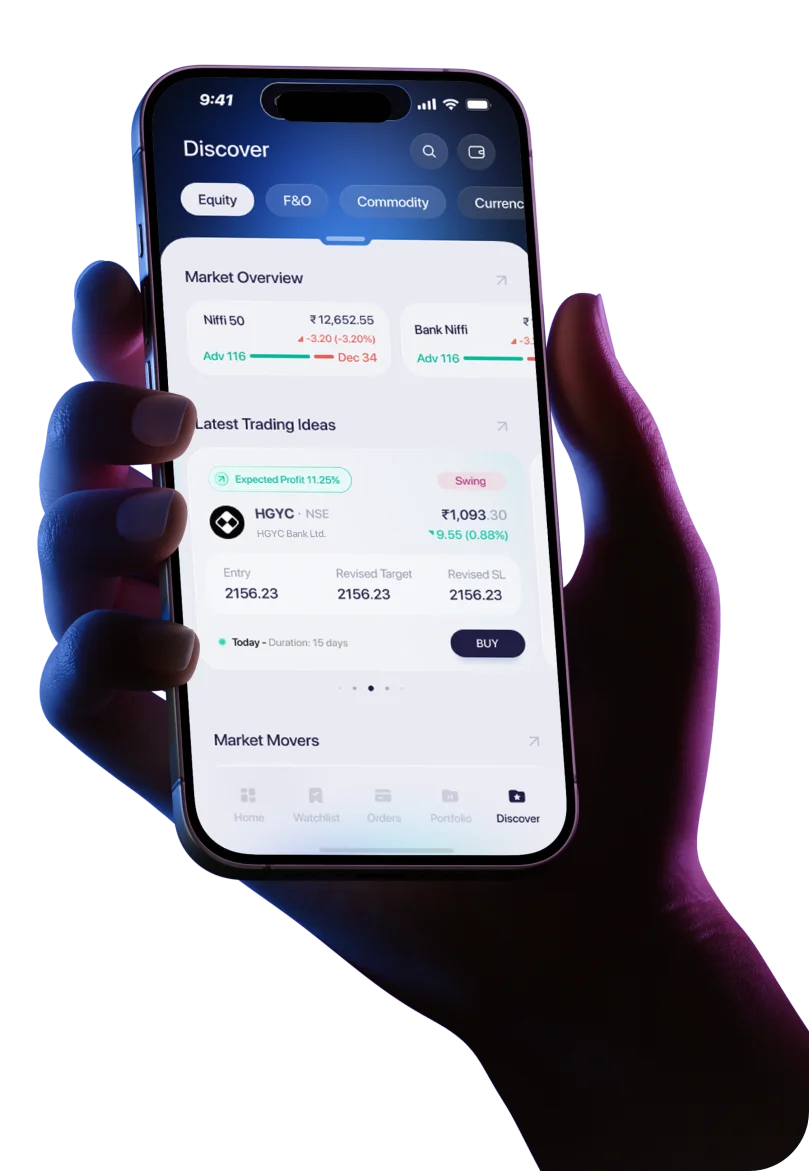In recent years, intraday option selling has emerged as a preferred strategy among retail and semi-professional traders in India’s F&O markets. With the surge in retail participation in derivatives and growing access to analytical tools, option writing, especially on an intraday basis, has proven to offer consistent income opportunities with defined risk management.
Unlike option buyers who need sharp directional moves to be profitable, option sellers benefit from time decay (theta) and range-bound markets. With the introduction of weekly expiries on instruments like Nifty and Bank Nifty, intraday option selling has gained further momentum among Indian traders seeking to take advantage of the rapid premium erosion during the trading day.
This article will help you understand what intraday option selling is, its advantages, popular strategies, risk management techniques, and how platforms like Samco provide tools and support for executing these trades efficiently.
1. What is Intraday Option Selling?
Intraday option selling refers to the act of writing (selling) options with the intention to square off the position before the market closes on the same day. Unlike positional traders who carry risk overnight, intraday sellers exit within the same session, avoiding overnight market events.
Key characteristics include:
- Time Decay Advantage (Theta): Every passing minute during the trading session benefits option sellers as premium decays with time, especially for near-expiry options.
- No Overnight Risk: Sellers are protected from overnight gap-ups or gap-downs caused by global cues, earnings, or macro events.
- Highly Liquid Instruments: Typically done on indices like Nifty, Bank Nifty, Fin Nifty, and highly liquid stocks such as Reliance, Infosys, or HDFC Bank.
Instruments like Bank Nifty weekly options, with their high liquidity and fast-decaying premiums, are highly suited for intraday option sellers.
2. Key Advantages of Intraday Option Selling
1. Time Decay (Theta) Works in Your Favor
Options lose value as time passes, especially as expiry nears. Intraday sellers can benefit significantly from this rapid decay, especially during sideways or low-volatility sessions. For example, an ATM call option trading at ₹100 in the morning could decay to ₹40 by afternoon without any major price move in the underlying.
2. Higher Probability of Profit
Statistically, option sellers have a 60–70% chance of being profitable as they capitalize on theta decay, implied volatility compression, and market range-bound behavior. Buyers, on the other hand, need large directional moves to profit.
3. Neutral Bias – No Need to Predict Market Direction
Many strategies, like short strangles or straddles, don’t require a bullish or bearish outlook. As long as the market stays within a defined range, the seller collects the entire premium.
4. No Overnight Risk Exposure
Intraday option sellers close their trades before the market close, avoiding:
- Global market movements
- News announcements
- Earnings reports
- RBI or SEBI surprises
5. Tight Bid-Ask Spreads & Scalping Opportunities
Highly liquid instruments like Nifty and Bank Nifty options offer tight spreads and faster execution, enabling quick scalping profits.
6. Margin Efficiency with Hedging
With the SEBI peak margin norms, unhedged selling requires high margin. However, hedged strategies (like iron condors) require significantly lower capital while defining risk.
Suggestion: Show a margin comparison table between:
- Naked call selling (₹1.2L)
- Call spread with OTM hedge (₹25–30K)
3. Popular Intraday Option Selling Strategies
Let’s explore practical strategies used by intraday traders, with their structure, payoff, risk-reward, and best use cases.
1. Short Straddle
Sell ATM Call + Sell ATM Put (Same Strike, Same Expiry)
- Ideal For: Range-bound days with low volatility
- Risk: Unlimited (in either direction)
- Reward: Limited to combined premium
- Example: Sell Nifty 25,000 CE and 25,000 PE for ₹110 each = ₹220 max profit
2. Short Strangle
Sell OTM Call + Sell OTM Put (Wider range)
- Ideal For: Slightly volatile days with range expectations
- Risk: Unlimited but lower than straddle due to wider breakevens
- Reward: Lower than straddle
- Example: Sell 25,200 CE and 24,800 PE
3. Iron Fly (Hedged Straddle)
Sell ATM CE + Sell ATM PE + Buy deep OTM CE + Buy deep OTM PE
- Risk: Defined and limited
- Reward: Lower, but safe
- Ideal: Volatile sessions with tight ranges
4. Iron Condor (Hedged Strangle)
Sell OTM CE + Sell OTM PE + Buy further OTM CE + Buy further OTM PE
- Risk: Defined and limited
- Reward: Lower than naked strangle but safer
- Ideal For: Non-directional range-bound markets
5. Directional Option Selling (Bear Call or Bull Put)
Bull Put Spread (Bullish Bias)
Sell Put + Buy lower Put
Use when market shows strength (above VWAP/50 EMA)
Bear Call Spread (Bearish Bias)
Sell Call + Buy higher Call
Use during resistance or falling trend
6. Ratio Spread or Calendar Spread
- More advanced
- Ratio Spread: Sell 2 ATM calls, Buy 1 ITM call
- Calendar: Sell current week, Buy next week (benefit from IV crush)
- Useful around events or expiry day
4. Managing Risk in Intraday Option Selling
Risk management is the backbone of successful option selling.
1. Use Strict Stop-Losses
- Always use stop-loss orders to protect against sharp directional moves.
- Many traders use 25–30% SL on premium or delta-based exits.
2. Position Sizing
- Avoid risking more than 2–3% of total capital in a single trade.
- Adjust position size based on volatility and distance from ATM.
3. Hedge Strategically
- Buy cheap OTM options to hedge risk and reduce margin.
- Turn naked straddles into iron flies.
4. Avoid High-Impact Events
- Don’t trade intraday selling around:
- RBI policy
- Union Budget
- Fed rates
- Election results
Use economic calendars to avoid such traps.
5. Tools to Support Option Selling
Leverage Samco’s tools for real-time decision-making:
1. Option Chain Analytics
- View IV, OI, Greeks for strike selection
2. Open Interest (OI) Analysis
- Spot resistance/support zones
- Avoid strikes with low OI
3. Real-Time Greeks
- Theta decay = Time value erosion
- Delta = Directional risk
- Vega = IV sensitivity
4. Margin Calculator
Try Samco’s Margin Calculator
Know how much capital is required for your trade—especially when using hedges.
5. Platform Integration
- Low-latency execution
- Pre-built strategies
- Research insights
- Basket order support for spreads
Explore Samco’s Option Tools
6. Mistakes to Avoid
Even experienced traders fall prey to these traps:
- Selling Without Checking IV: Avoid shorting when IV is very low.
- Blindly Holding Till 3:30 PM: Exit once 80–90% of premium is eroded.
- No Trade Plan or Adjustment: Enter with an entry-exit-adjustment plan.
- Ignoring Position Sizing: Overleveraging is the top reason for failure.
7. Real-Life Case Study: Intraday Bank Nifty Trade
Scenario:
Bank Nifty on expiry Thursday, trading around 55,000. Market expected to stay range-bound.
Trade Setup (10:00 AM):
- Sell 55,000 CE at ₹140
- Sell 55,000 PE at ₹135
- Total Premium Collected = ₹275
- Stop Loss per leg = ₹210
Hedging:
Buy 55,600 CE and 54,400 PE (₹10 each)
Exit (2:30 PM):
- Both legs at ₹35 each
- Profit = ₹205 per lot (x25) = ₹5,125
- Capital used (with hedge) = ₹30,000
- Return on Capital = ~17%
8. Conclusion
Intraday option selling is a high-probability strategy that, when executed with proper tools, risk management, and market understanding, can deliver consistent profits. It benefits from time decay, avoids overnight risk, and allows for neutral to mildly directional views.
However, discipline is key. Blindly selling options without a plan can be dangerous. With the right setup, proper tools, and strategic execution—like those provided by Samco’s platform, option sellers can generate reliable intraday income with manageable risk.



 Easy & quick
Easy & quick
Leave A Comment?